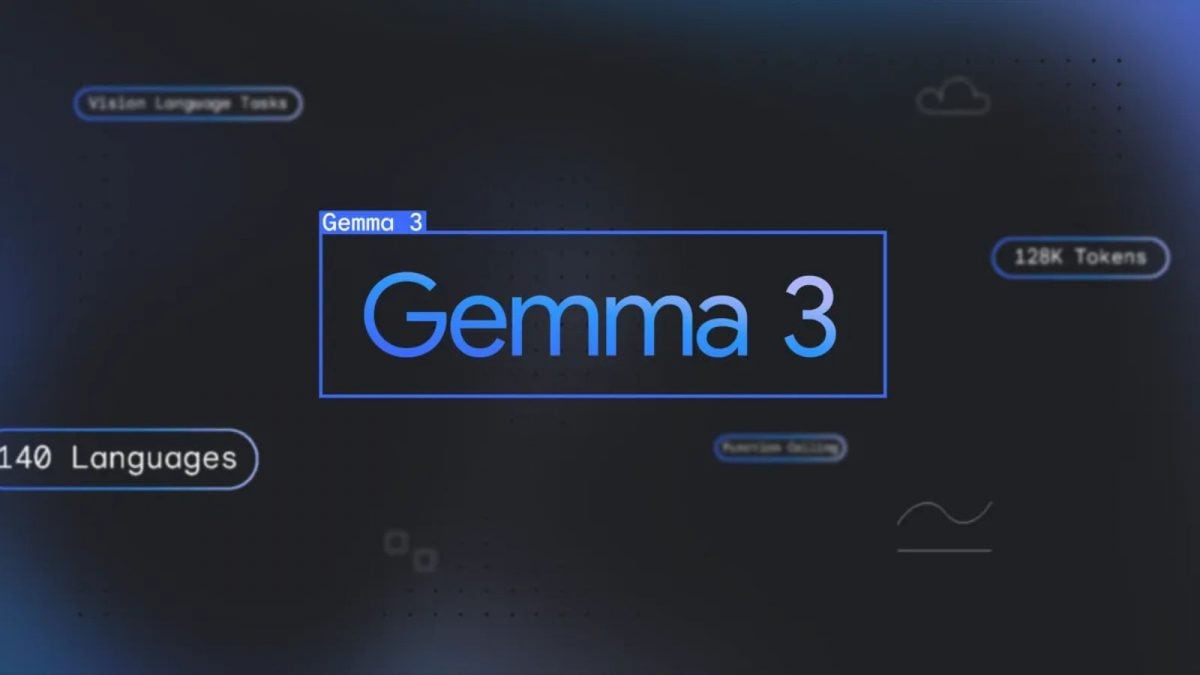Gemma 3 AI Model Outperforms GPT and DeepSeek AI

Google’s New Gemma 3 AI Model
Google has unveiled its latest AI model, Gemma 3, which has quickly garnered attention for its innovative architecture and powerful performance. This new model not only enhances previous versions but also demonstrates impressive capabilities that outshine competitors such as GPT and DeepSeek.
Overview of Gemma 3
The Gemma 3 series represents a significant advancement in Google’s AI offerings. It follows the Gemma 2 models released in August 2024 and boasts enhanced text and visual reasoning abilities. One notable feature of these models is that they support over 140 languages, with initial support for more than 35 languages upon release. This accessibility aims to bridge linguistic divides and enable a broader range of users to interact with AI technology.
Technical Specifications and Performance
Gemma 3 is built on technology similar to that of Google’s flagship Gemini 2.0 model. Its open-source nature allows for wide application and implementation. Some critical specifications of the Gemma 3 series include:
- Model Sizes: Gemma 3 comes in four configurations: 1 billion, 4 billion, 12 billion, and 27 billion parameters.
- Hardware Compatibility: These models can efficiently run on Google’s Tensor Processing Units (TPUs) or a single Graphics Processing Unit (GPU), making them accessible to developers with various hardware setups.
Google claims that the Gemma models have been utilized to create over 60,000 variants and have achieved more than 100 million downloads to date, showcasing their popularity and versatility.
Superior Capabilities
The new models are designed to analyze text, images, and short videos effectively. They are particularly noted for their sophisticated language and visual reasoning skills. One standout feature is their ability to handle a 128,000 token context window, allowing them to process and understand complex queries and datasets.
Additionally, Gemma 3 includes functionality for developers to implement “function calling,” enabling the creation of more interactive and responsive applications. This aspect elevates user engagement by allowing software to react in real-time to user actions or inputs.
Safety Features
In developing Gemma 3, Google emphasized the importance of safety and risk assessment. The company conducted comprehensive evaluations to ensure that the models adhere to its internal safety policies. They implemented benchmark tests and fine-tuning procedures which, according to Google, helped maintain a minimal risk level for users.
Alongside Gemma 3, Google also introduced ShieldGemma 2, a safety tool designed to filter and prevent the generation of dangerous or inappropriate content. This image safety checker works with AI models to ensure the output is safe and suitable for all users. Furthermore, developers have the option to customize ShieldGemma to enhance safety protocols, promoting responsible use of AI.
Accessibility and Availability
The Gemma 3 family of AI models can be downloaded from platforms like Kaggle or Google’s Hugging Face listing. This approach allows developers and researchers to access cutting-edge technology and explore its capabilities for various applications.
Summary of Key Features
- Support for Many Languages: Over 140 languages catered to, enhancing global reach.
- Powerful Performance: Outperforms leading competitors like OpenAI’s o3-mini and others on the LMArena leaderboard.
- Diverse Applications: Can handle text, images, and videos, providing comprehensive analytical capabilities.
- Safety as a Priority: Strong measures in place to limit harmful outputs and enhance user safety.
With the release of Gemma 3, Google continues to push the boundaries of AI technology, providing developers with powerful tools while ensuring responsible usage and safety standards.





